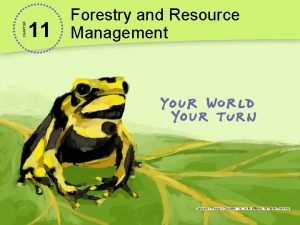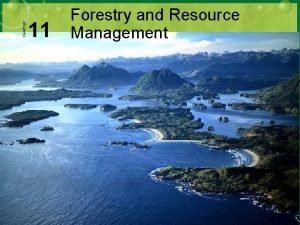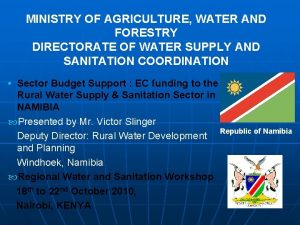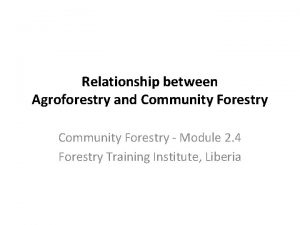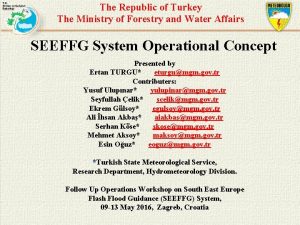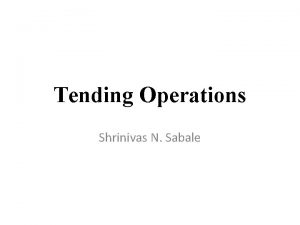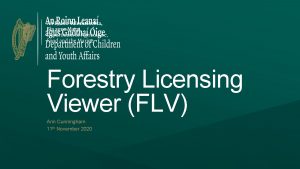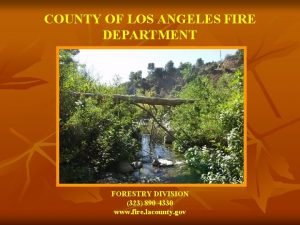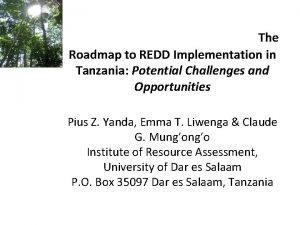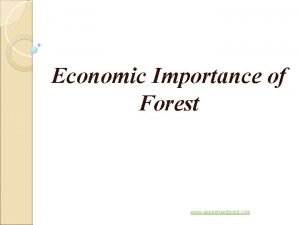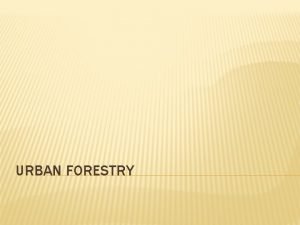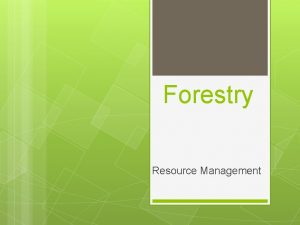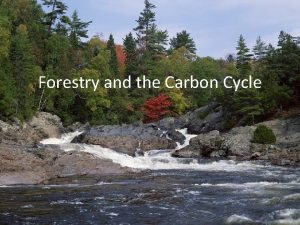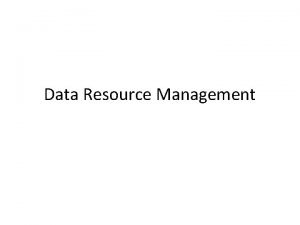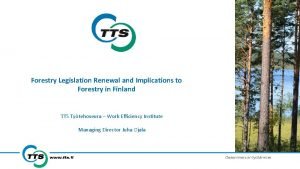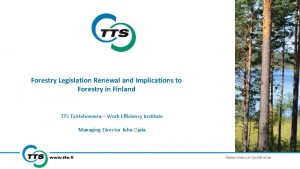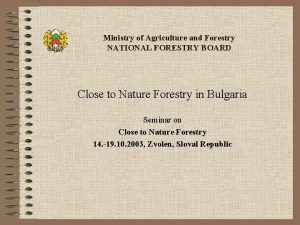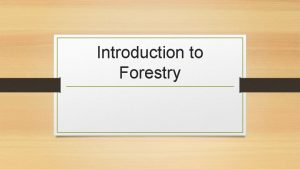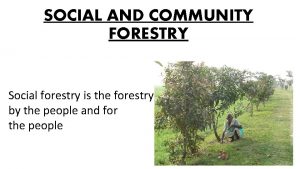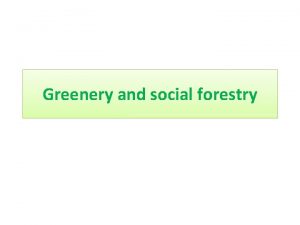Chapter 11 Forestry and Resource Management Section 1















- Slides: 15

Chapter 11 Forestry and Resource Management

Section 1: Resource Management • Renewable resources can run out if not used sustainably • only used as rapidly as they can be replaced • Resource managers must balance people’s needs for a resource and an ecosystem’s need for that resource

Section 1: Resource Management • Resource management – the managing of resource harvesting so that resources are not depleted • Guided mainly by scientific research but may also be influenced by politics, economics, and social issues

Section 1: Resource Management • Renewable resources that must be managed wisely: • Soil • Freshwater • Wild animals • timber

Section 1: Resource Management • 3 resource management approaches: • Maximum sustainable yield • Ecosystem-based management • Adaptive management

Section 1: Resource Management • Maximum sustainable yield (MSY) – aim is to harvest the max amount of a resource without reducing amount of future harvests • Goal is to keep population below carrying capacity, at an intermediate size – grows fastest • Management for 1 population could mean changes for other populations

Section 1: Resource Management • Ecosystem-Based Management – goal is to harvest resources in ways that minimize impact on the ecosystems and ecological processes that provide the resources • Ecosystems are complex, and all interactions are not understood

Section 1: Resource Management • Adaptive Management – involves scientifically testing different management approaches in an area, and then customizing an approach based on the results • Can be time consuming and complicated • Any given management approach will succeed in some places and fail in others

Section 2: Forests and Their Resources • Ecological value of forests: • • • Conservation of biodiversity Prevention of soil erosion Purification of air and water Reduce flooding Regulate climate through uptake of CO 2

Section 2: Forests and Their Resources • 4 methods of timber harvesting: • • Clear-cutting Seed-tree approach Shelterwood approach Selection systems

Section 2: Forests and Their Resources • Clear-cutting – all trees in an area are cut at once • Most cost-efficient, but has greatest impact on ecosystem • Causes soil erosion, displacement of entire communities, and may lead to a different climax community, permanently altering ecosystem

Section 2: Forests and Their Resources • Seed-tree approach – small numbers of mature and healthy seed-producing trees are left standing so they can reseed the logged area

Section 2: Forests and Their Resources • Shelterwood approach – small numbers of mature trees left in place to provide shelter for seedlings as they grow • Less-harmful than clear-cutting

Section 2: Forests and Their Resources • Selection systems – only some of the trees are cut at once • More expensive than clear-cutting and more dangerous • Less harmful to ecosystems

 Forestry and resource management chapter 11 answers
Forestry and resource management chapter 11 answers Battling over clayoquot big trees worksheet answers
Battling over clayoquot big trees worksheet answers Ministry of agriculture, water and forestry directorates
Ministry of agriculture, water and forestry directorates Mendel university fees
Mendel university fees State and private forestry
State and private forestry Difference between agroforestry and community forestry
Difference between agroforestry and community forestry Maine dept of agriculture
Maine dept of agriculture Republic of turkey ministry of agriculture and forestry
Republic of turkey ministry of agriculture and forestry Resource allocation vs resource leveling
Resource allocation vs resource leveling Contoh resource loading
Contoh resource loading What is tending operations
What is tending operations Forestry license viewer
Forestry license viewer La county fuel modification
La county fuel modification Forestry io roadmap
Forestry io roadmap Careers related to forestry
Careers related to forestry Conclusion of deforestation
Conclusion of deforestation
